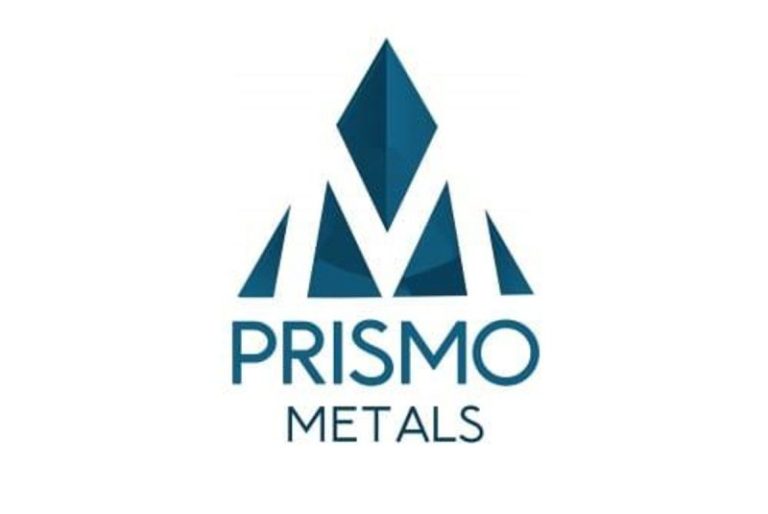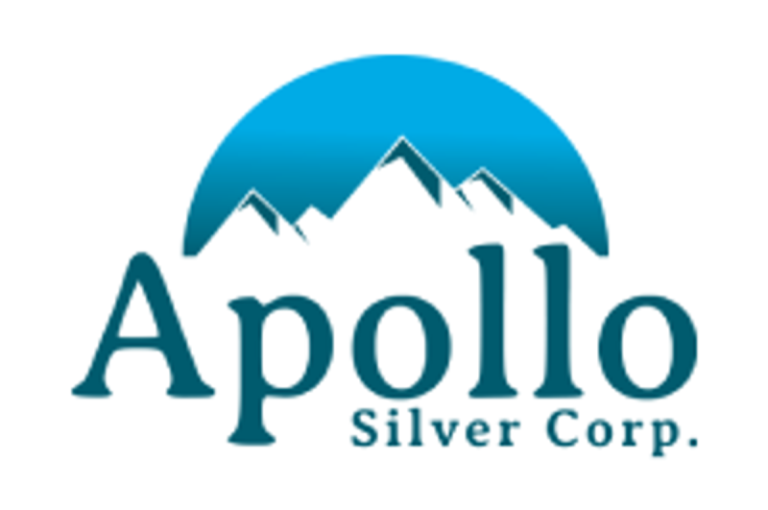Natural gas is an important energy fuel, even as the world transitions to a carbon-free economy. When investing in this industry, it’s key to know the ins and outs of natural gas production by country.
Global natural gas production edged up 1.2 percent in 2024 to reach 4.12 trillion cubic meters, led by the United States, Russia, Iran and China, which together supplied more than half the world’s natural gas production, according to data from the Energy Institute.
European production extended its long-term decline, weighed down by lower volumes from Norway, the UK and the Netherlands.
On the consumption side, demand grew 2.5 percent — its fastest pace in years — with Asia Pacific economies such as China, Japan and India driving nearly half the gains, while Europe saw its first demand uptick since 2021.
“Natural gas continued to displace oil and oil products in various sectors, supported by policies, regulations and market dynamics,” the International Energy Agency’s (IEA) Global Energy Review 2025 reads.
Read on for a look at the top 10 natural gas-producing countries in 2024 based on the most recent data from the Energy Institute’s annual Statistical Review of World Energy.
1. United States
Production: 1.03 trillion cubic meters
The US is by far the largest producer of natural gas in the world with production of 1.03 trillion cubic meters of natural gas in 2024, representing nearly a quarter of global natural gas production.
Its output has increased by more than 300 billion cubic meters in the past decade owing to the increasing cost of coal and advancements in extraction technology such as horizontal drilling and hydraulic fracturing, also known as fracking.
In addition to being a major natural gas producer, the US is also the biggest consumer of the fuel. In 2024, US demand for natural gas totaled 902.2 billion cubic meters, up from 2023’s 888.4 billion cubic meters, according to the Energy Institute.
In 2024, the US exported a record volume of liquified natural gas (LNG) at 115.2 billion cubic meters, following a 10th consecutive year of record production. While US exports grew just 0.4 percent year-over-year, they have exploded over the last decade from 2015’s 700 million cubic meters.
High international demand and steady domestic consumption growth will keep the US a net exporter of petroleum products and natural gas through 2050. Despite the shift to renewable electricity generation, US natural gas production is expected to rise due to increased international demand for liquefied natural gas, according to the US EIA’s Annual Energy Outlook 2023.
In early 2025, in response to US tariff threats from new President Donald Trump, China slapped a 15 percent tariff on US LNG imports. According to the Financial Press, the US accounted for about 6 percent of China’s LNG consumption in 2024.
Natural gas is expected to play a growing role in the US energy mix through 2050, even as oil and coal consumption decline, according to S&P Global Commodity Insights. Analysts point to coal-to-gas substitution as a key driver of the US transition, while scalability and cost barriers continue to slow a direct leap from coal to renewables.
“By 2050, gas shall be the only fossil fuel with a potential increase in the energy mix for the US, China, and India,” the S&P report notes.
2. Russia
Production: 629.9 billion cubic meters
The second largest exporter and producer of natural gas in the world, Russia produced 629.9 billion cubic meters of natural gas in 2024. The country’s state-owned energy group Gazprom its its largest natural gas producer, with gas company Novatek taking second place.
Russia also holds the largest-known natural gas reserves on the planet, at just under 20 percent as of 2020.
“Historically, production was concentrated in West Siberia, but investment has shifted in the past decade to Yamal and Eastern Siberia and the Far East, as well as the offshore Arctic,” according to the International Energy Agency.
Europe’s rejection of Russian natural gas products led to a 41 percent decline in revenues for the country’s producers in the first three quarters of 2023, reported Reuters.
While Russia remains the world’s second largest natural gas producer and the second largest exporter of the fuel, the EU is phasing out Russia-sourced natural gas by 2027 due to the country’s war on Ukraine. In June 2025 the EU introduced a proposal for a legal framework for accomplishing the 2027 goal.
EU imports of Russian natural gas have plunged by more than two-thirds since 2020, falling from 14.7 to 4.4 billion cubic feet per day in 2024, the EIA reported. Additionally, the EU reported that Russia only supplied 14 percent of its member countries’ natural gas requirements in 2023, down from 45 percent in 2021.
Despite the conflict between Russia and Ukraine, the latter has remained a crucial corridor for Russian natural gas into the EU. In September 2024, Russian natural gas exports that traveled through Ukraine totaled 1.26 billion cubic meters.
To offset lost European demand, Russia has pivoted its energy export trade, with China and India propping up its natural gas export market. The country has expanded gas exports eastward via the Power of Siberia 1 pipeline, which has been running near full capacity since China’s segment came online in late 2024. Plans for a second pipeline remain stalled, with Moscow and Beijing yet to agree on terms despite years of negotiations.
Russia is also set to supply Iran with natural gas after it signed a long-term natural gas supply deal in October 2024 in which Gazprom committed to supplying 109 billion cubic meters of gas to Iran annually.
3. Iran
Production: 262.9 billion cubic meters
Iran, the third largest natural gas-producing country and the largest in the Middle East, produced 262.9 billion cubic meters of natural gas in 2024, representing about 6.4 percent of global output. The Middle Eastern nation ranks second in terms of natural gas reserves.
While its natural gas infrastructure is far behind the top two natural gas producers, Iran has increased its natural gas production significantly in the past decade to become the Middle East’s largest producer. Iran and Qatar share the world’s largest natural gas field. Iran’s portion is known as South Pars and Qatar’s is North Dome.
Iran plans to boost its production capacity by 30 percent within five years, supported by an US$80 billion investment in its gas fields, according to the nation’s Oil Minister Javad Owji. However, Qatar’s expansion of liquefied natural gas production in North Dome poses a challenge to Iran’s output ambitions.
In mid-2025, Iran partially suspended gas output at the South Pars field after an Israeli airstrike damaged one of its key processing units (Phase 14). The strike shut down approximately 12 million cubic meters per day of gas production. While production has reportedly resumed, it is unclear if operations are at full capacity.
Turkey and Iraq are major importers of Iranian natural gas, while Turkmenistan and Armenia have swap deals with Iran. Iran signed a long-term deal to import 109 billion cubic meters of gas from Russia annually in late 2024, with Russia paying for construction of the necessary pipeline.
4. China
Production: 248.4 billion cubic meters
China’s natural gas production reached 248.4 billion cubic meters in 2024, an all-time record.
In recent years, China’s government has incentivized the transition from coal to natural gas to reduce air pollution and meet emissions targets. In its 14th Five-Year Plan, the government set an annual natural gas production target of 230 billion cubic meters by 2025, a goal the country met two years early in 2023. Between 2014 and 2024, natural gas production in China grew by 89 percent from 131.2 billion cubic meters.
China still relies on imports to meet about half of its demand. Australia, Turkmenistan, the US, Malaysia, Russia and Qatar are some of its biggest providers. However, it has yet to meet its natural gas storage target of 55 billion to 60 billion cubic meters, with only 26.7 billion cubic meters by the end of 2024, S&P Global reports.
Unconventional gas sources such as shale, coal-bed methane and natural gas hydrates accounts for an estimated 43 percent of China’s total gas output.
While domestic production has ticked higher, China’s LNG imports are moving the opposite direction. LNG imports fell by more than 20 percent during the first half of 2025. Rising domestic and pipeline supply is helping offset the reduced LNG inflows, with policy and infrastructure efforts aimed at shrinking reliance on imported gas.
Domestic demand has also pulled back slightly, as China’s gas demand declined by roughly 1 percent year-over-year in H1 2025.
5. Canada
Production: 194.2 billion cubic meters
Canada produced 194.2 billion cubic meters of natural gas in 2024, and the country holds 83 trillion cubic feet of proved natural gas reserves. The Western Canadian Sedimentary Basin (WCSB) is the prime source of the majority of Canada’s natural gas production. In addition to the WCSB, offshore fields near Newfoundland and Nova Scotia, the Arctic region and the Pacific coast hold significant natural gas reserves.
Canada is also a top natural gas exporter, relying exclusively on pipelines, with the US as its only trading partner. In 2022, 99 percent of all US natural gas imports came from its neighbor to the north.
In early 2025, US President Trump threatened to place 10 percent tariffs on energy imports from Canada, including natural gas. The move has led to increased calls for cross-Canada pipeline building and expansion of trade partners.
Looking to expand its trade partner list, in late June, LNG Canada shipped its first liquefied natural gas cargo to Asia from its new export facility in Kitimat, British Columbia. The terminal is a joint venture that includes Indigenous, provincial and international partners, and began operations with two liquefaction trains capable of producing 14 million metric tons per annum.
“With LNG Canada’s first shipment to Asia, Canada is exporting its energy to reliable partners, diversifying trade, and reducing global emissions — all in partnership with Indigenous Peoples,” Prime Minister Mark Carney said of the shipment. “By turning aspiration into action, Canada can become the world’s leading energy superpower with the strongest economy in the G7.”
His words reiterated the findings of a May 2025 report from the Fraser Institute that outlined Canada’s ability to contribute to global greenhouse gas emissions reduction through increased LNG production and exports to countries that currently rely on coal.
“As countries like China and India continue to burn coal for power, Canadian LNG offers a lower-emission alternative with the potential for major global impact,” said Elmira Aliakbari, director of natural resource studies at the Fraser Institute and coauthor of the study.
6. Qatar
Production: 179.5 billion cubic meters
Qatar is the sixth largest natural gas producer and hosts the third largest proved natural gas reserves in the world. The majority of its reserves are located in the world’s largest natural gas field, the offshore North Field, which it shares with Iran.
Qatar is the world’s second largest LNG exporter with 106.9 billion cubic meters in 2024, just above third-place Australia’s 106.8 billion.
In recent years, Qatar has made moves to capitalize further on its resources in an effort to expand its footprint in the international natural gas market. Statista reports that state-owned Qatar Petroleum is looking “to increase its LNG export market to compete with Russian LNG deliveries.”
To fulfil these aspirations Qatar is pushing ahead with expansion plans that are projected to nearly double the country’s LNG output over the next few years, raising production capacity from 77 million metric tons per annum to around 126 million by 2027.
Key to that growth is the North Field East expansion, which is set to begin partial output in mid-2026 as new LNG trains come online.
7. Australia
Production: 150.1 billion cubic meters
Australia produced 150.1 billion cubic meters of natural gas in 2024, an increase of 130 percent compared its 65.3 billion cubic meters to in 2014. Nearly all of Australia’s natural gas resources are located in the North West Shelf, with three of the basins there providing feedstock to the country’s largest gas fields, including Greater Gorgon, North West Shelf Venture and Ichthys
Australia’s LNG exports have grown exponentially over the past decade as several new production facilities have come online. The country was the third largest exporter of LNG in 2024 at 106.8 billion cubic meters.
The federal government released its Australia’s Future Gas Strategy in May 2024. The initiative focuses on ensuring energy security and supporting the transition to net-zero by 2050 by boosting natural gas production. The government plan highlights the need for new gas supplies to prevent shortages by 2028 on the east coast and 2030 on the west coast.
While supportive of the plan, Australia’s energy producers have raised concerns of potential gas supply shortfalls by the end of the decade amid global market volatility. Meg O’Neill, chair of Australian Energy Producers, highlighted that without action, Australia’s east and west coasts could face shortages by 2028 and 2030, respectively, which could drive up energy prices.
In March 2025, Exxon Mobil (NYSE:XOM) and Woodside Energy Group (ASX:WDS,NYSE:WDS) announced a US$222 million investment to drill five new wells in the Gippsland Basin’s Turrum and Turrum North fields, aiming to extend Southeastern Australia’s gas output beyond 2030.
The Turrum Phase 3 project underscores efforts to sustain domestic supply from the aging Bass Strait, even as production declines. It follows other recent approvals by the joint venture to bolster Australia’s gas availability amid tightening forecasts.
8. Saudi Arabia
Production: 121.5 billion cubic meters
The eighth largest natural gas-producing country, Saudi Arabia has seen its output increase by 25 percent since 2014, reaching a record 121.5 billion cubic meters in 2024.
Mordor Intelligence reports that this production growth was due in large part to increased development of standalone natural gas wells. State-run Saudi Aramco has awarded contracts to energy companies looking to develop the country’s largest unconventional gas field, Jafurah, located near the Persian Gulf.
Currently the country does not export its natural gas production; however, the government plans to begin natural gas exports by 2030. According to the EIA, Saudi Arabia is working to replace “crude oil, fuel oil, and diesel-powered electric generators with natural gas and renewable energy generation by 2030, which will likely increase domestic natural gas demand.”
In late 2023, Saudi Arabia began investing in the LNG market with Saudi Aramco buying a stake in MidOcean Energy, which is set to acquire interests in four Australian LNG projects. In July 2024, Aramco awarded contracts worth US$12.6 billion to expand production in the Jafurah field.
The Jafurah project is central to Aramco’s goal of boosting gas output by 60 percent by 2030.
This was supported by an August announcement that Aramco signed an US$11 billion deal with a consortium led by Global Infrastructure Partners, part of BlackRock to lease and lease back its Jafurah gas processing facilities for 20 years.
A new subsidiary, Jafurah Midstream Gas Company, will manage the assets, with Aramco retaining a 51 percent stake and exclusive rights to process gas from the field.
9. Norway
Production: 113.2 billion cubic meters
Norway is the world’s ninth largest natural gas producer. Norway’s natural gas production reached a record-high of 116 billion cubic meters in 2023, but contracted to 113.2 billion cubic meters in 2024.
The Scandinavian country has understandably replaced Russia as the major supplier to the European natural gas market. In 2023, Norway reportedly accounted for 30.3 percent of natural gas supplied to the EU.
Norway’s natural gas companies have ramped up production in response to increased demand. In mid-2023, the government gave the green light to 19 oil and gas extraction projects in the country.
In early 2024, some concern arose that the industry may face headwinds from a proposal by a climate change committee to temporarily suspend new licenses while the government decides on a climate strategy. However, in May 2024 the government offered licenses for 37 new blocks and emphasized the industry’s importance to Norway and Europe.
Near-term gas production is forecasted to contract slightly in 2025 according to the Norwegian Budget Bill released in early October 2024.
In June 2025, Shell (NYSE:SHEL) began operating two sub-sea compressors at the Ormen Lange field in the Norwegian Sea, a move expected to lift gas recovery rates from 75 percent to 85 percent.
Located 120 kilometers offshore on the seabed and linked to the Nyhamna processing plant, the compressors could enable the extraction of an additional 30 billion to 50 billion cubic meters of gas.
10. Algeria
Production: 94.7 billion cubic meters
Rounding out the top 10 natural gas-producing countries is Algeria, which produced 94.7 billion cubic meters of natural gas in 2024. The country’s output decreased year-over-year from 101.5 billion cubic meters in 2023. In 2022, nearly 85 percent of the country’s exports went to feed Europe’s natural gas demand.
In late May 2024, Algeria signed two key hydrocarbon deals with US firms, one with ExxonMobil and the other with Baker Hughes (NASDAQ:BKR), to boost its natural gas production and enhance exports to Europe. This comes as European nations seek alternatives to Russian gas amid rising demand.
Despite the year-over-year production contraction, Algeria aims to ramp up its natural gas output to 200 billion cubic meters by 2030, according to Energy and Mines Minister Mohamed Arkab.
Key to reaching this target will be heavy investment with US$36 billion earmarked for exploration and production. The strategy includes expanding infrastructure at the Hassi R’Mel field with new compression stations and leveraging recently discovered fields to boost both domestic supply and export capacity.
Algeria reportedly began discussions with ExxonMobil and Chevron (NYSE:CVX) in August 2025 for a landmark deal to develop its natural gas reserves, including shale resources, in a move seen as part of the country’s efforts to attract international investment.
The potential agreement would mark the first time US majors have gained direct access to Algeria’s reserves, introducing advanced fracking techniques to unlock shale gas deposits domestic operators have been unable to access.
FAQs for gas investing
What is natural gas made of and how is it formed?
Natural gas is a mixture of methane and other naturally occurring gases. As fossil fuels, both crude oil and natural gas are formed via the same geological process. It isn’t surprising then that the two materials are often found together. Natural gas is the product of ancient decomposed organic matter that mixed with sediment, became buried and was subject to immense pressure and heat over millions of years.
How is natural gas produced?
Natural gas is extracted via wells drilled into subsurface rock formations, or via hydraulic fracturing or ‘fracking’ technology from shale formations. Following extraction, natural gas is separated from other liquids, including oil, hydrocarbon condensate and water. This separated gas then needs to be further processed to meet specific requirements for end-use quality and safe pipeline transmission.
What is natural gas used for?
Natural gas is well known as a fuel for heating, generating electricity and powering vehicles. However, it’s also used to manufacture various products, such as vinyl flooring, carpeting, Aspirin and artificial limbs; in addition, it’s a key component in the production of ammonia.
Is natural gas a clean energy?
According to the EIA, burning natural gas for power emits fewer greenhouse gas emissions and pollutants than other fossil fuels, since it burns more easily and contains fewer impurities. The EIA also notes that natural gas produces less carbon dioxide per equivalent amount of heat production.
Is natural gas cleaner than coal?
Although natural gas is a fossil fuel and was formed under the same conditions, it is often pegged as a ‘cleaner’ energy option than coal or oil. The EIA states that, ‘burning natural gas for energy results in fewer emissions of nearly all types of air pollutants and carbon dioxide than burning coal or petroleum products to produce an equal amount of energy.’
How much natural gas is left in the world?
Natural gas is not an infinite, renewable resource; however, its hard to determine how many untapped sources are left in the world. According to one estimate, natural gas reserves are sufficient to last another 53 years at current consumption rates. That figure doesn’t take into account known natural gas resources under development or those yet to be discovered in underexplored regions.
How did the Ukraine war affect gas?
Russia was a leading supplier of natural gas to Europe prior to the country’s invasion of Ukraine, representing about 40 percent of the region’s supply. As a result of the war, energy prices shot up both in Europe and globally. According to S&P Global, the war has “accelerated” the globalization of the natural gas market as Europe turns to LNG. In the midst of this changing landscape, the US has become the world’s largest exporter of LNG as it stepped up shipments to Europe.
Can Europe survive without Russian gas?
The EU is working to phase out Russian natural gas exports by 2027. The growing global LNG market allows flexibility for European countries looking to source natural gas supply from producers as close to home as Norway (Europe’s biggest gas supplier), other major natural gas suppliers in North Africa or from the world’s largest natural gas producer, the US.
Securities Disclosure: I, Georgia Williams, hold no direct investment interest in any company mentioned in this article.
This post appeared first on investingnews.com










